Hello Steemians! Here’s a post that comes from the depths of my “origin story” as a filmmaker. (As origin stories go, this is a recent one as I’ve only been making films seriously since 2012.)
This story is about my first real film, “A Day in the Life of a Fire Lookout."
 I started volunteering as a fire lookout in 2010 because my community in southern Marin is the poster-child for catastrophic fire and I wanted to do something to help keep eyes on the undeveloped wild part of the county. The bonus was knowing that the view from up the Gardner Lookout at 2571' above San Francisco Bay is spectacular, full of great photographic opportunities. So I threw my tiny Canon S95 point-and-shoot and a GorillaPod in my bag every time I'd go up for a shift. The motion of the fog flowing around the mountain was (literally) indescribably beautiful, and the only way to show my friends and family what it looked like was with moving pictures. Perhaps then they'd be able to understand the awesome feeling of being on top of an empty mountain in the middle of a community of 7 million people. (Mt. Tam is off-limits to the public at night.)
Here's mostly why I want to share this with y'all on Steemit. It's about working the creative problem. It took me 3 summers of attempting to capture something this ephemeral before I got it right, but eventually I nailed it. First I did some tests with the S95’s simple time-lapse feature and the results were promising and over the next few shifts I'd add a few shots to my collection with the hopes of being able to capture the beauty of the place. The 2010 results were interesting, but they didn’t convey the deeply spiritual experience of being on top of the mountain all night. It was a reasonable start.
I started volunteering as a fire lookout in 2010 because my community in southern Marin is the poster-child for catastrophic fire and I wanted to do something to help keep eyes on the undeveloped wild part of the county. The bonus was knowing that the view from up the Gardner Lookout at 2571' above San Francisco Bay is spectacular, full of great photographic opportunities. So I threw my tiny Canon S95 point-and-shoot and a GorillaPod in my bag every time I'd go up for a shift. The motion of the fog flowing around the mountain was (literally) indescribably beautiful, and the only way to show my friends and family what it looked like was with moving pictures. Perhaps then they'd be able to understand the awesome feeling of being on top of an empty mountain in the middle of a community of 7 million people. (Mt. Tam is off-limits to the public at night.)
Here's mostly why I want to share this with y'all on Steemit. It's about working the creative problem. It took me 3 summers of attempting to capture something this ephemeral before I got it right, but eventually I nailed it. First I did some tests with the S95’s simple time-lapse feature and the results were promising and over the next few shifts I'd add a few shots to my collection with the hopes of being able to capture the beauty of the place. The 2010 results were interesting, but they didn’t convey the deeply spiritual experience of being on top of the mountain all night. It was a reasonable start.
 I really needed the flexibility and low-light sensitivity of a DSLR because otherwise I wasn’t able to capture the most magical moments at night. But because Nikon's hardware focus came late to video, that was still over a year off.
So in 2011 I brought a camcorder up with me on my shifts and made this. And the result was frustrating... I felt that I'd gone backwards from the previous film -- it had lost much of the poetic feeling from the first film and of course had none of the all-important stars, no mystery of the universe.
I really needed the flexibility and low-light sensitivity of a DSLR because otherwise I wasn’t able to capture the most magical moments at night. But because Nikon's hardware focus came late to video, that was still over a year off.
So in 2011 I brought a camcorder up with me on my shifts and made this. And the result was frustrating... I felt that I'd gone backwards from the previous film -- it had lost much of the poetic feeling from the first film and of course had none of the all-important stars, no mystery of the universe.
 Finally, during the spring of 2012 I sold my Nikon D700 and bought the video capable D4. I also acquired a small motorized slider, which enabled motion-controlled moves, creating the parallex effect that’s critical for immersing the viewer in a time-lapse shot.
I captured all of the shots in the video over a 3-day shift in August. Luckily some clouds came through one night and provided extra depth to the big expanses of landscape over the SF Bay.
Finally, during the spring of 2012 I sold my Nikon D700 and bought the video capable D4. I also acquired a small motorized slider, which enabled motion-controlled moves, creating the parallex effect that’s critical for immersing the viewer in a time-lapse shot.
I captured all of the shots in the video over a 3-day shift in August. Luckily some clouds came through one night and provided extra depth to the big expanses of landscape over the SF Bay.
 Once the shoot was over, all of the raw files were brought into Lightroom and then processed with a critically-important tool called LRTimelapse. LRT provides the ability to interpolate between all raw file parameters over time, and you can define keyframes to control how and when those interpolations occur. This provides tremendous control over exposure, white balance and more, providing the equivalent of a fully-editable raw video stream. I used the very first version of Final Cut Pro X to cut the piece.
For many of the time-lapse shots that were a little temporally coarse, needing more motion smoothing, I used a very useful plugin from RE:vision called ReelSmart Motion Blur. This allowed me to render additional motion blur, which is important since you can’t go back and recapture a sequence with a longer exposure after the fact. For a few sequences in the lookout video, it was a lifesaver.
The time-lapse sequences clearly convey the emotions that I feel while volunteering at the fire lookout. In my mind, time-lapse provides the viewer with a look into "deep time" -- a time-scale way beyond our normal comprehension.
The inherent problem I faced in making a video about a person who just sits in a room and looks out the window all day was to keep it interesting, and to convey the feeling of what it’s like to be there. I thought about this for quite a while before beginning production, and I think that these three sequences in particular are very effective.
The first one is at 1:05, which is a simple tracking shot on the dolly of me sitting in the captain’s chair. This is where the lookout spends a lot of time and it was important to illustrate. The slider’s motion from right to left conveys a sense of time passing much more than a static shot would.
Once the shoot was over, all of the raw files were brought into Lightroom and then processed with a critically-important tool called LRTimelapse. LRT provides the ability to interpolate between all raw file parameters over time, and you can define keyframes to control how and when those interpolations occur. This provides tremendous control over exposure, white balance and more, providing the equivalent of a fully-editable raw video stream. I used the very first version of Final Cut Pro X to cut the piece.
For many of the time-lapse shots that were a little temporally coarse, needing more motion smoothing, I used a very useful plugin from RE:vision called ReelSmart Motion Blur. This allowed me to render additional motion blur, which is important since you can’t go back and recapture a sequence with a longer exposure after the fact. For a few sequences in the lookout video, it was a lifesaver.
The time-lapse sequences clearly convey the emotions that I feel while volunteering at the fire lookout. In my mind, time-lapse provides the viewer with a look into "deep time" -- a time-scale way beyond our normal comprehension.
The inherent problem I faced in making a video about a person who just sits in a room and looks out the window all day was to keep it interesting, and to convey the feeling of what it’s like to be there. I thought about this for quite a while before beginning production, and I think that these three sequences in particular are very effective.
The first one is at 1:05, which is a simple tracking shot on the dolly of me sitting in the captain’s chair. This is where the lookout spends a lot of time and it was important to illustrate. The slider’s motion from right to left conveys a sense of time passing much more than a static shot would.
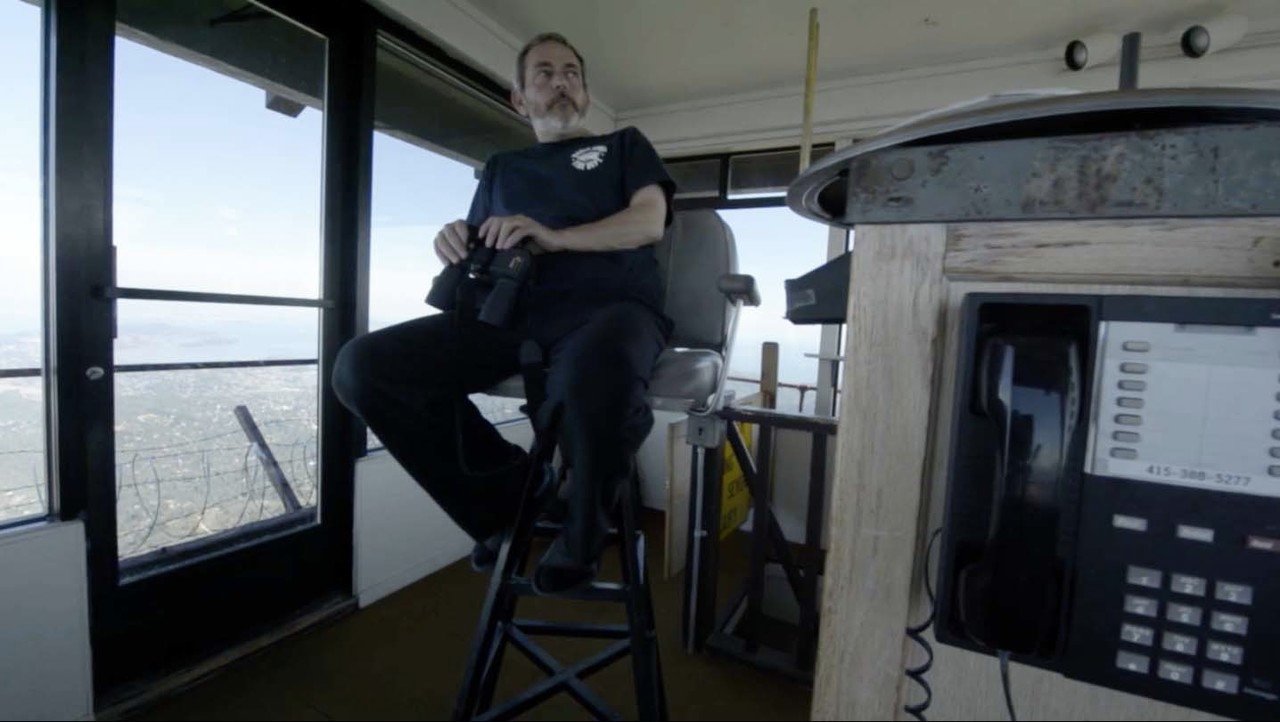 The second one is at 1:25, which shows how we use the Osborn Fire Finder to determine the bearing and azimuth of a smoke column. I made this interesting by shooting it as a time-lapse sequence with very long (>10 second) exposures, using about 14 stops of neutral density This added motion blur to my movements, again showing the passage of time, but in this case, time folding into itself to make an everyday common activity more interesting. I additionally used ReelSmart Motion Blur in After Effects to further smooth the inter-frame motion.
The second one is at 1:25, which shows how we use the Osborn Fire Finder to determine the bearing and azimuth of a smoke column. I made this interesting by shooting it as a time-lapse sequence with very long (>10 second) exposures, using about 14 stops of neutral density This added motion blur to my movements, again showing the passage of time, but in this case, time folding into itself to make an everyday common activity more interesting. I additionally used ReelSmart Motion Blur in After Effects to further smooth the inter-frame motion.
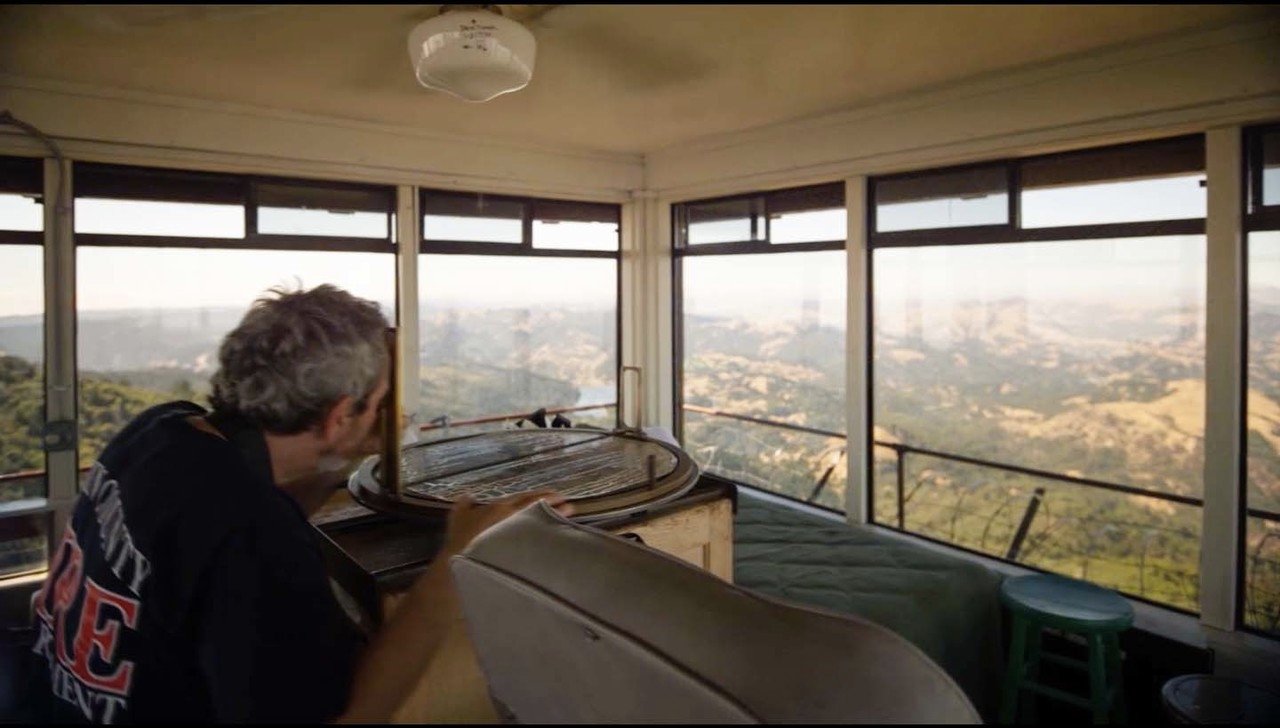 Finally I used a layering technique for the shot at 1:47 by running the camera on the motorized slider four times: one with me not in the shot and three times with me doing different things in the lookout, masking out each version in post. I wanted to convey the impression of the lookout structure being the constant and me just being one of the many people who will occupy it over time. I find something deeply poignant about this shot, reminding me that I'm only here for a short moment in time...
Finally I used a layering technique for the shot at 1:47 by running the camera on the motorized slider four times: one with me not in the shot and three times with me doing different things in the lookout, masking out each version in post. I wanted to convey the impression of the lookout structure being the constant and me just being one of the many people who will occupy it over time. I find something deeply poignant about this shot, reminding me that I'm only here for a short moment in time...
I teared up the first time I saw it assembled and it still hits me hard every time I see it.
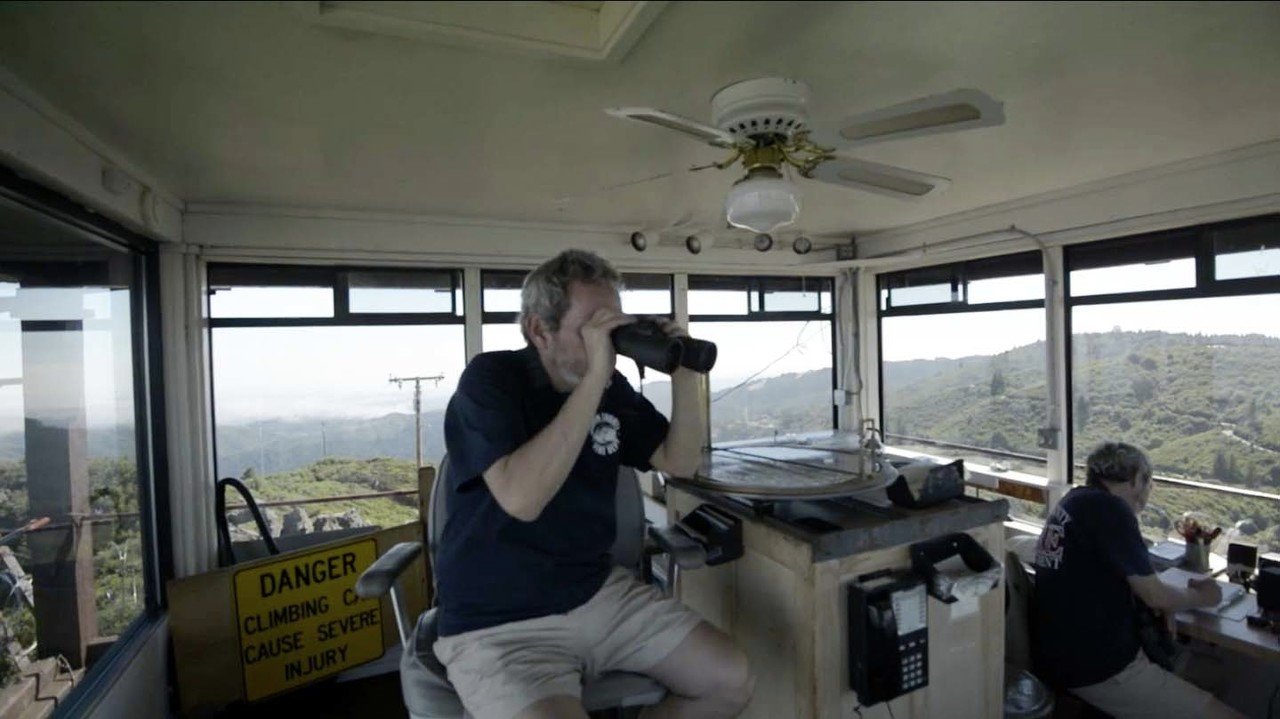 Besides those three shots, I used rhythmic editing principles to accentuate the emotional quality of the incredible music from the Cinematic Orchestra from the soundtrack to the beautiful film "On Crimson Wing." This reinforces the timelessness that I feel when I'm in the lookout. And perhaps the biggest decision was to break the piece into two major parts, daytime and nighttime, so that I could use a different rhythmic structure for each part. The first part, during the day, is edited in a much faster rhythm than the languid, dreamlike nighttime section. This context switch, the contrast between day and night, makes the video more interesting than if it was created in one single rhythmic structure.
I originally made this film to share with the people I knew and for Marin County Fire to use as a recruitment tool. We had about 30 volunteers in the lookout program before the film was released, but now there are 80 of us (with a long waiting list).
I figured that maybe a few thousand people would see it. But it's become much more popular than that because it struck a chord within the viewers. Mountains are a significant force in our metaphorical lives, the Bay Area is beautiful and fire lookouts have a mythically-meditative place in our collective experience.
Within the time-lapse community, the video has been recognized because it breaks out of the typical mode of "cotton candy" time-lapse sequences. Most time-lapse footage these days is presented as an end to itself, and not as a supporting element of a larger story. There’s a great quote from John Lasseter of Pixar:
Besides those three shots, I used rhythmic editing principles to accentuate the emotional quality of the incredible music from the Cinematic Orchestra from the soundtrack to the beautiful film "On Crimson Wing." This reinforces the timelessness that I feel when I'm in the lookout. And perhaps the biggest decision was to break the piece into two major parts, daytime and nighttime, so that I could use a different rhythmic structure for each part. The first part, during the day, is edited in a much faster rhythm than the languid, dreamlike nighttime section. This context switch, the contrast between day and night, makes the video more interesting than if it was created in one single rhythmic structure.
I originally made this film to share with the people I knew and for Marin County Fire to use as a recruitment tool. We had about 30 volunteers in the lookout program before the film was released, but now there are 80 of us (with a long waiting list).
I figured that maybe a few thousand people would see it. But it's become much more popular than that because it struck a chord within the viewers. Mountains are a significant force in our metaphorical lives, the Bay Area is beautiful and fire lookouts have a mythically-meditative place in our collective experience.
Within the time-lapse community, the video has been recognized because it breaks out of the typical mode of "cotton candy" time-lapse sequences. Most time-lapse footage these days is presented as an end to itself, and not as a supporting element of a larger story. There’s a great quote from John Lasseter of Pixar:
“You cannot base a whole movie on just the imagery alone. It has to be the story and the characters.”
When I began seriously making videos in 2012 I was committed to making sure I wasn’t just producing pretty pictures that moved. Heck, I’d been doing that for the past 20 years in the realm of 3D animation software.
I wanted to make pretty pictures that moved people.
And that’s why this video has connected so widely. I cannot describe the feeling of getting hundreds of emails and comments from people about how this little film made such a huge impact on them. Here’s one of my favorites:
Hello Gary,
I just saw your video, “A Day in The Life of a Fire Lookout.” Brought tears.
I’m a 68 year old retired cop. I hike upon the Mountain almost every day. Your film moved me hugely.
I feel like I’ve finally found peace in my life roaming the paths and trails on Tam. I’ve forwarded your film to the people in my life. It will help them understand.
Thanks for putting it together. When I’m unable to be on the Mountain, I will take refuge in your film.
I’ll think of you every time I look at the tower.
That’s the most rewarding thing that a filmmaker can do … make an emotional connection at such a deep level.
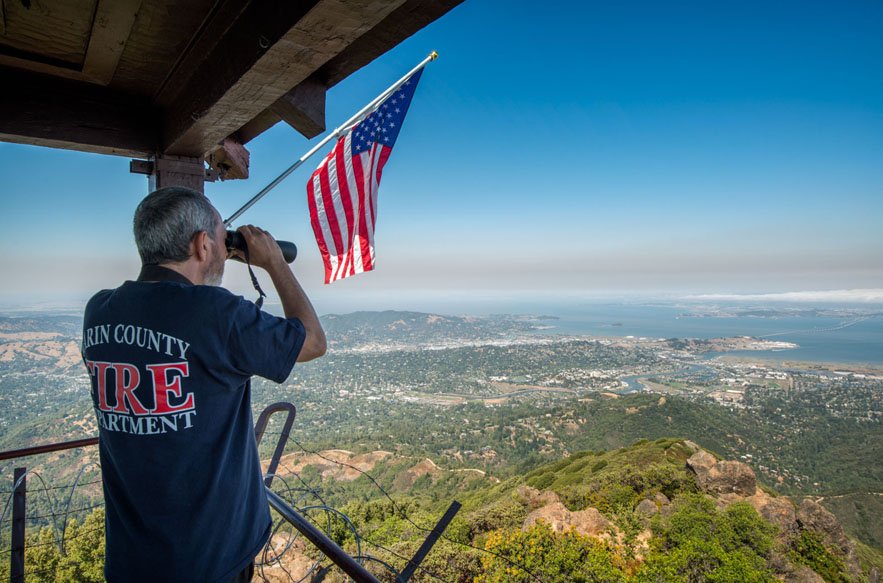 In an article about the film in our local newspaper, a reporter asked me what I planned to do next and my off-the-cuff answer led to what's become my biggest project and personal legacy to Mount Tamalpais and my community.
In an article about the film in our local newspaper, a reporter asked me what I planned to do next and my off-the-cuff answer led to what's become my biggest project and personal legacy to Mount Tamalpais and my community.
But that's for another blog post.
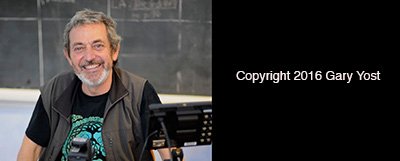 You can find my verification post here.
You can find my verification post here. 








